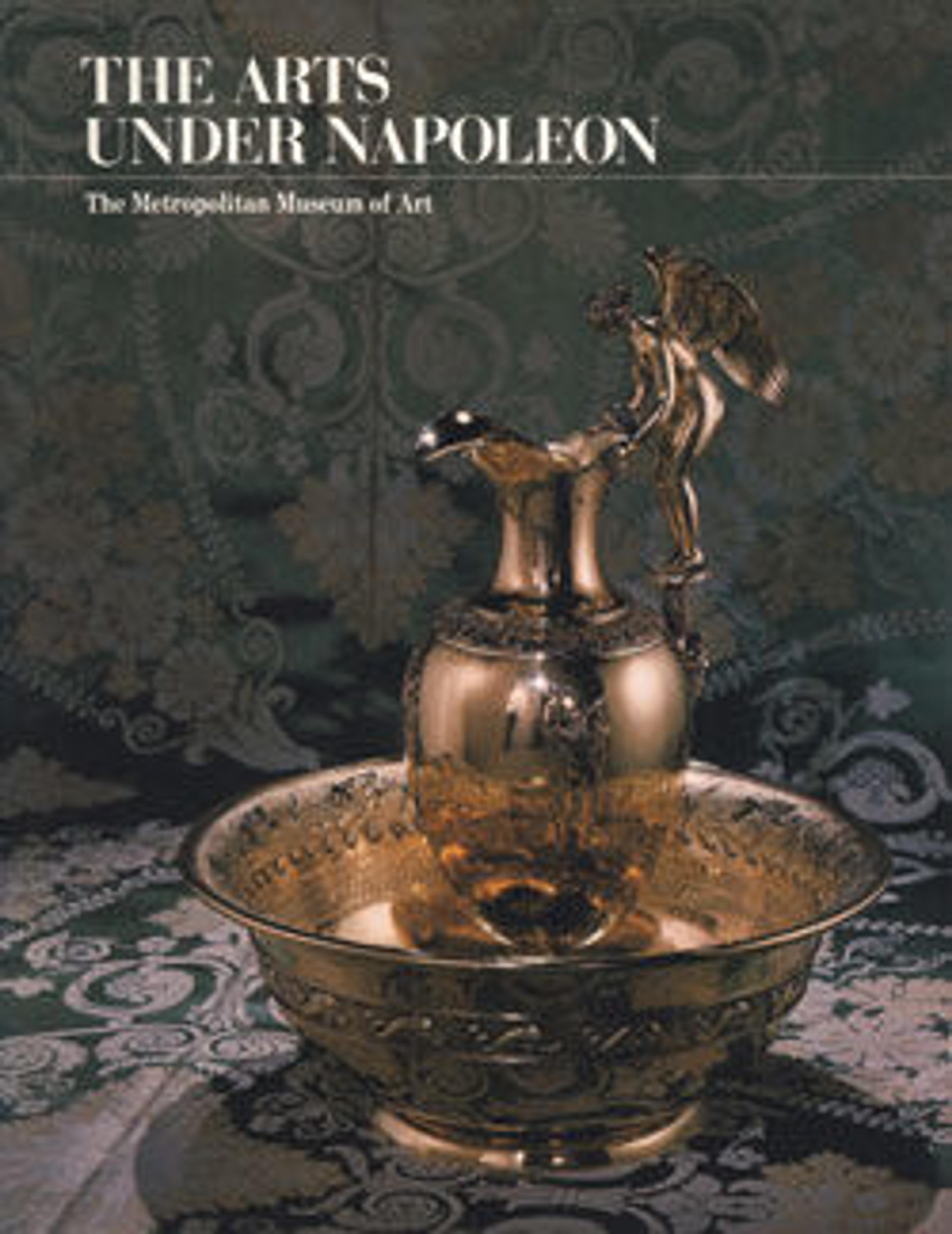Chair back and seat cover
The Mobilier National, successor to Colbert's royal Garde-Meuble de la Couronne, has been responsible for the decoration of state residences in France to the present day. During the seventeenth and eighteenth centuries, the Garde-Meuble oversaw the ordering of textiles from Lyon as part of a general plan to support French industry and decrease competitive textile imports from Italy and elsewhere. Lyon silk manufacturers, known collectively as the Grande Fabrique, were sustained by these commissions and, in response to strict regulatory edicts, brought an unsurpassed degree of beauty and quality to the fabrics they produced. After 1792, all work for the Garde-Meuble ceased in Lyon until January 1802, when Napoleon and Josephine toured the factories on the Quai Saint-Clair. Commissions were soon underway to decorate the palaces being refurbished by the Garde-Meuble, which Napoleon reorganized and designated the Mobilier Impérial.
Designed by Jean-Pierre Séguin for the fourth petit salon of the apartment of Napoleon I at Versailles, this fabric was not used until the period of the Restoration by the duchesse d'Angoulême at Saint-Cloud. A gros de Tours (heavy silk), its design is based upon a wall fabric at Malmaison. Its bright yellow ground is punctuated by cerise rosettes and bunches of brocaded lilacs and anemones within central medallions. The lilac and anemone patterns covered chair backs and seats respectively.
Designed by Jean-Pierre Séguin for the fourth petit salon of the apartment of Napoleon I at Versailles, this fabric was not used until the period of the Restoration by the duchesse d'Angoulême at Saint-Cloud. A gros de Tours (heavy silk), its design is based upon a wall fabric at Malmaison. Its bright yellow ground is punctuated by cerise rosettes and bunches of brocaded lilacs and anemones within central medallions. The lilac and anemone patterns covered chair backs and seats respectively.
Artwork Details
- Title: Chair back and seat cover
- Manufactory: Séguin et Cie
- Date: 1811
- Culture: French, Lyons
- Medium: Brocaded silk
- Dimensions: L. 48 x W. 21 3/4 inches (121.9 x 55.2 cm)
- Classification: Textiles-Woven
- Credit Line: Rogers Fund, 1928
- Object Number: 28.28.1
- Curatorial Department: European Sculpture and Decorative Arts
More Artwork
Research Resources
The Met provides unparalleled resources for research and welcomes an international community of students and scholars. The Met's Open Access API is where creators and researchers can connect to the The Met collection. Open Access data and public domain images are available for unrestricted commercial and noncommercial use without permission or fee.
To request images under copyright and other restrictions, please use this Image Request form.
Feedback
We continue to research and examine historical and cultural context for objects in The Met collection. If you have comments or questions about this object record, please complete and submit this form. The Museum looks forward to receiving your comments.
